Remembering my elementary school art lessons, I fondly recall the use of the complementary colours, such as blue and orange. Such colour theory taught me that complementary colours were found by looking at the circumference of the colour wheel and the two colours placed diametrically at opposite sides were the complementary pairs. Now, such complementary pairs, when placed next to each other create the strongest contrasts for those particular two colours. Due to this striking colour clash, the term ‘opposite colors’ is often considered more appropriate than ‘complementary colors’. However, no amount of theory arouses our senses as effectively as looking at a painting, for example, Vincent Van Gogh’s, Starry Night (1889) – where the vibrant orange stars and moon appear to pulsate out of the swirling, intense blue of the night sky.
For the painter, Wassily Kandinsky, colour also had a particularly spiritual dimension and in his book, ‘Concerning the Spiritual in Art’, published in 1911 he set out to explain the painter’s palette in two ways: First is the effect on the eye (person’s physical understanding of the colour) and secondly is the “inner resonance”, psychological effect, when it effects our spiritual experience.
This ‘inner resonance’ can be perceived or perhaps more appropriately felt as:
Blue – peaceful, supernatural, deep, “typical heavenly color”, The lighter it is, the more calming it is. When in the end it becomes white, it reaches absolute calmness.
Orange – radiant, serious, healthy, mix of red and yellow.
Turning to the butterfly world, (and about time I hear you moan) I can think of no better embodiments of the ‘inner resonance’ of blue and orange than that possessed by the Holly Blue and Orange Tip butterfly. I’m sure that both Van Gogh and Kandinsky would have marvelled at the beauty of their colouration. Both are early spring butterflies (emergence usually in April), however, that is about all they have in common. So the term ‘complementary pairs’ is also appropriate and fittingly alludes to their striking and contrasting blue and orange-tip wings. The term ‘opposite pairs’ is perhaps even more accurate as these tow butterflies posses two distinct and very different characteristics.
Starting with the Holly Blue (Celastrina argiolus), this is the first of the blue butterflies on the wing. A blue butterfly, seen in April flying around Holly, is almost certainly a Holly Blue. Confusion with the Common Blue is possible later on in the year but the Holly Blue has a distinctive pale blue underwing spotted lightly with black and silver but with no trace of orange.
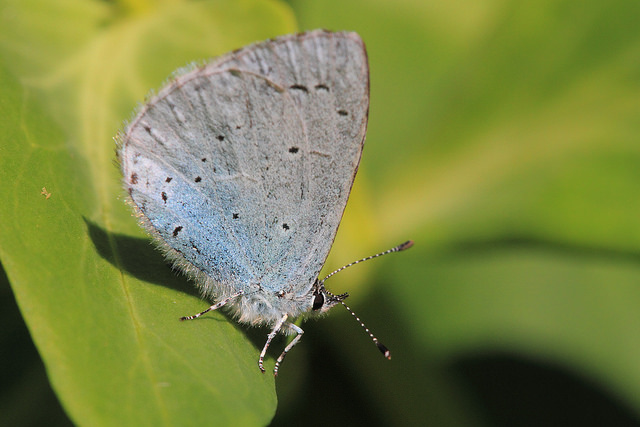
The Holly Blue has a distinctive pale blue underwing spotted lightly with black and silver.
Wandering Holly Blues can often be seen moving along hedgerows or through sheltered gardens. They often settle high on sunlit leaves to drink aphid honeydew. In dry summers like this one, the males may venture down to take salts from muddy puddles. They typically perch with their wings closed, although they do open them, particularly in weak sunshine.
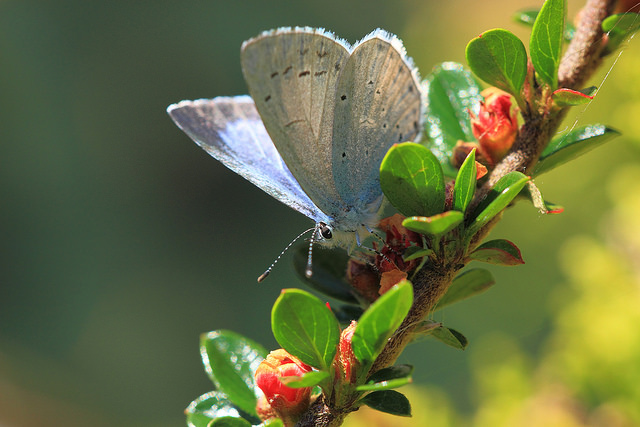
Holly Blue visiting my garden with wings partially open.
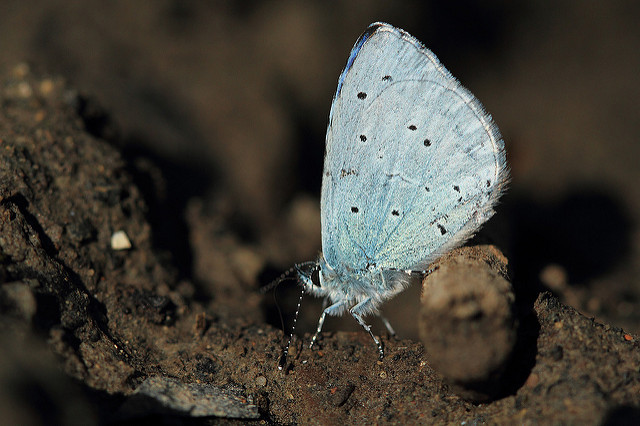
This Holly Blue is feeding avidly on the salts in patches of mud. Like many butterflies,
they are not averse to dung, benefitting from the minerals that it contains.
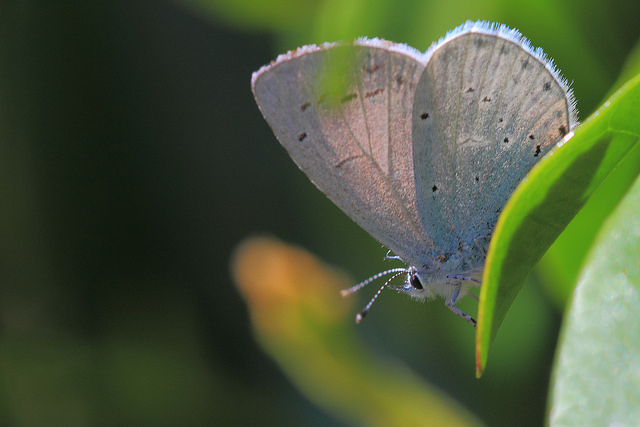
Here the Holly Blue is seen fidgeting in the sunshine with transparent wings firmly closed,
preferring to drink honeydew rather than nectar.
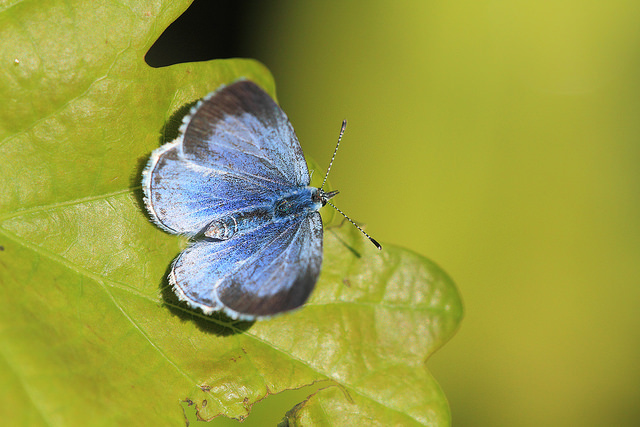
They typically perch with their wings closed, although they do open them,
particularly in weak sunshine.
While the Holly Blue may be a worthy contender for the crown of daisies, no butterfly better symbolises the arrival of spring than the Orange-tip (Anthocharis cardamines), particularly when seen feasting on its favourite foodplant, Cuckooflower (more lyrically referred to as ‘Our Ladies Smock’).
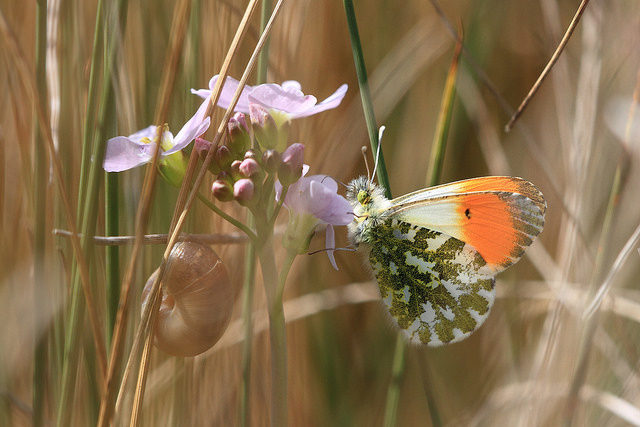
Orange tip feeding on Cuckooflower. The undersides of the hindwing are visible and camouflage takes over as the most important form of defence. The exposed wing surfaces are delicately mossed with green (or rather the illusion of green) for the lovely lichen-like mottling is created from an intricate mixture of black and yellow scales.
Males are unmistakable, due to their bright orange-tipped wings. However females are similar in appearance to other whites. Both males and females when perched with wings closed are readily identified by the beautiful green mottling of the underside of the hindwing.

Males are unmistakable, due to their bright orange-tipped wings
You may think that having orange tips is a sure signal for predatory birds to come and eat me! However, Orange-tips are are highly distasteful because their bodies contain large amounts of bitter mustard oils, accumulated from their food plants during the caterpillar stage. It therefore pays for the males to advertise this fact and the bright tips of the upper forewings act as a warning signal. Once a bird has tasted an Orange-tip it is reluctant to repeat the experience.

Both males and females are readily identified by the beautiful green mottling of the underside of the hindwing. This particular specimen was seen feeding on Red Clover (Trillium pratense).
Orange-tips prefer damp, grassy habitats as well as roadside verges, meadows and grassy woodland glades. This is a nomadic-like, meandering species that seldom pauses for long anywhere and strays over a wide area.
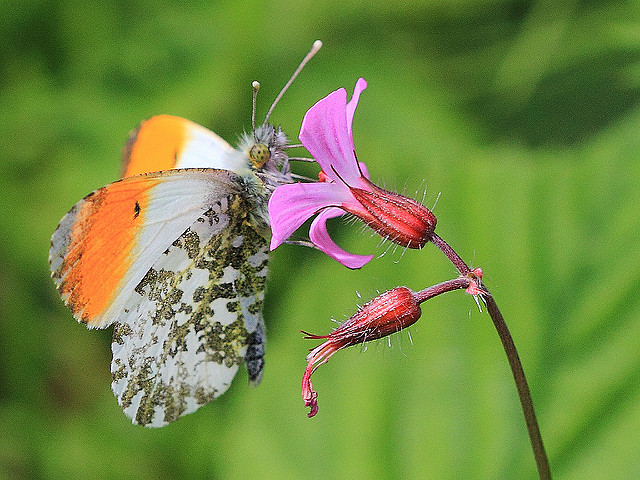
The Orange-tip does not form discrete colonies but wanders in every direction as it flies along hedgerows and woodland margins looking for a mate, nectar sources or food plants.
Captured feeding on Red Campion (Silene dioica).
Orange-tips can be challenging subjects to photograph as they will not stay still for long but like to tirelessly roam the countryside. However, by watching them I find that they will tend to patrol a certain patch of woodland (usually along the hedgerow). So when one flutters away I patiently wait and as sure as night follows day it return to pretty much the same spot.
In conclusion, both the Holly Blue and the Orange-tip are fitting ambassadors for the Spring! My spirit always awakens and rejuvenates whenever I see them flutter by or perch on some plant. Blue and Orange, a wonderful pair of complementary opposites.

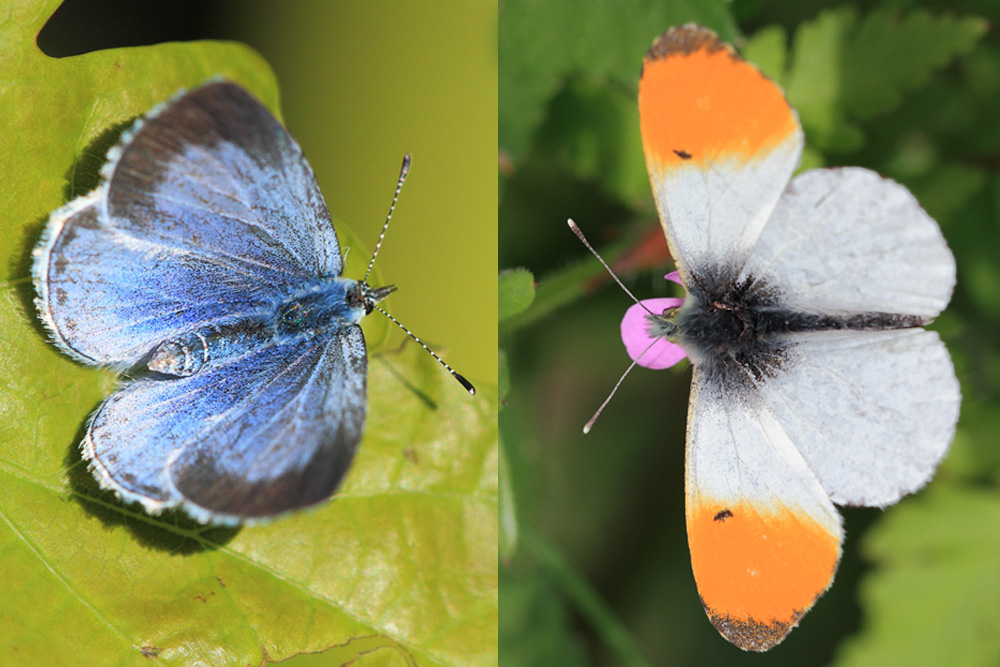
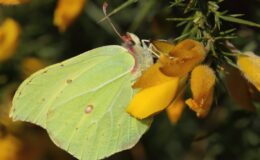
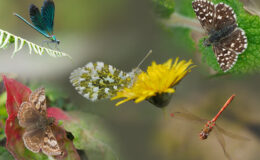
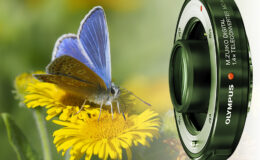
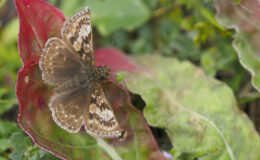
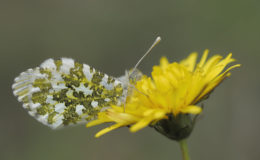
Leave a Comment